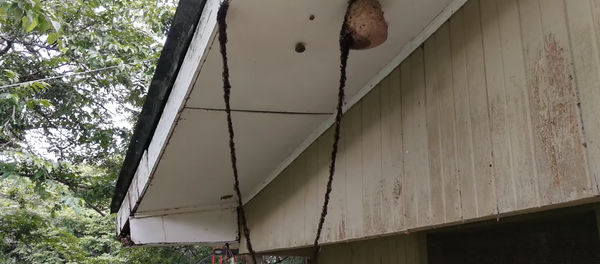A newly-identified wasp species can “hijack” the nervous systems of spiders known to live in communal webs, forcing them to abandon their colonies and mindlessly protect the wasp’s eggs. After the wasp eggs hatch to become larva, the ‘zombie’ spiders “wait patiently” to be eaten, according to Ecological Entomology.
READ MORE: Hug Me Please: Spider Crab Cuddles Camera
Zoology researchers with the University of British Columbia (UBC) working in Ecuador documented this frightening symbiotic relationship after observing the parasitical life cycle between a previously unknown wasp of the Zatypota genus and the social Anelosimus eximius spider.
A wasp in the Zatypota genus had previously been observed influencing and commanding the behaviour of a solitary spider, but this is the first time a wasp was found to have ‘zombified’ a so-called “social” spider.
The wasp larva then manipulates the spider’s decision-making, including causing the host spider to “exit the colony and spin a cocoon for the larva before patiently waiting to be killed and consumed.” Researchers found that it normally took about 11 days for the wasp larvae to completely consume a spider.
“Once the larva becomes a fully formed wasp, they will go off and find a mate. Then the cycle continues,” noted co-author Samantha Straus, cited by Motherboard.
The ability of the wasp to modify the behaviour of its victim is unique, however.
“The wasp completely hijacks the spider’s behaviour and brain and makes it do something it would never do, like leave its nest and spinning a completely different structure. That’s very dangerous for these tiny spiders,” said Straus in a UBC news release.
Entomologists suggest that the wasps target social spiders by injecting them with hormones, making entire colonies submissive to the larva, turning them into a large, stable, food source.
Straus says she hopes to return to Ecuador to investigate whether the wasps return to the same spider colonies generation after generation and, if the answer is yes, what evolutionary advantage that presents.



